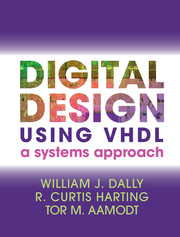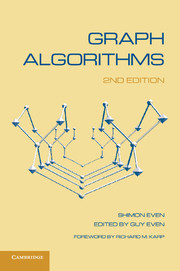Digital Logic Design
This introductory textbook, based on the authors' 15 years experience in teaching logic design, is a complete teaching tool for turning students into logic designers in one semester. It covers combinational circuits, basic computer arithmetic, synchronous circuits, finite state machines, logical simulation, and an implementation of a simple RISC processor and its machine language. Each chapter first describes new concepts and then gives extensive applications and examples of these new ideas. Assuming no prior knowledge of discrete mathematics, the authors introduce all the necessary background in propositional logic, asymptotics, graphs, hardware and electronics. Important features of the presentation are:
• Every designed circuit is formally specified and implemented; the correctness of the implementation is proved, and the cost and delay are analyzed
• Algorithmic solutions are offered for tasks such as logical simulation, computation of propagation delay, and minimum clock period
• Connections are drawn from the physical analog world to the digital abstraction
• The language of graphs is used to describe formulas and circuits
• Hundreds of figures, examples and exercises enhance understanding
The extensive website http://www.eng.tau.ac.il/~guy/Even-Medina/ includes teaching slides and links to Logisim and a DLX assembly simulator.
- Offers a completely self-contained text that assumes no prior knowledge of discrete mathematics
- Designed to turn students into logic designers in one semester
- Features an extensive website with teaching slides, links to Logisim and a DLX assembly simulator, as well as other supplements
- Each chapter includes concepts illustrated through extensive applications, examples and problems
Reviews & endorsements
"The book is a refreshing and carefully written introduction to the design and analysis of digital logic circuits, culminating in the design of a simple microprocessor. The book aims to give a mathematical foundation and presentation of the field at an introductory level, and it succeeds well: the level of presentation and proof is very consistent and complete, essentially self-contained, and proofs are easy to follow, with essentially all details given, which is a huge bonus if the book is used in class. For the interested, perhaps mathematically inclined, non-student researcher, the book is a very enjoyable read."
Jesper Larsson Traff, Vienna University of Technology
"I am very taken by their approach, which emphasizes mathematical rigor and
the “ritual,” as Even and Medina call it, of formal specification, design,
correctness proof, and analysis of delay and cost. Teaching students how
to design correctly from the start is the only long-term solution to poor
system design. I like very much that they end with an instruction‐set
architecture description of a simplified DLX microprocessor. In my opinion,
this is exactly where to end a hardware course, as it is the responsibility
of hardware designers to faithfully implement the programmer’s reference
model used by software engineers."
Shiu‐Kai Chin, Syracuse University
"I highly recommend this book for academic courses on digital design."
Vladimir Botchev, Computing Reviews
Product details
June 2019Paperback
9781108708036
368 pages
253 × 177 × 19 mm
1kg
102 b/w illus. 35 tables 183 exercises
Available
Table of Contents
- Part I. Preliminaries:
- 1. Sets and functions
- 2. Induction and recursion
- 3. Sequences and series
- 4. Directed graphs
- 5. Binary representation
- 6. Propositional logic
- 7. Asymptotics
- 8. Computer stories: big endian vs. little endian
- Part II. Combinational Circuits:
- 9. Representation by formulas
- 10. The digital abstraction
- 11. Foundations of combinational circuits
- 12. Trees
- 13. Decoders and encoders
- 14. Selectors and shifters
- 15. Addition
- 16. Signed addition
- Part III. Synchronous Circuits:
- 17. Flip-flops
- 18. Memory modules
- 19. Foundations of synchronous circuits
- 20. Synchronous modules: analysis and synthesis
- 21. The ISA of a simplified DLX
- 22. A simplified DLX: implementation.





